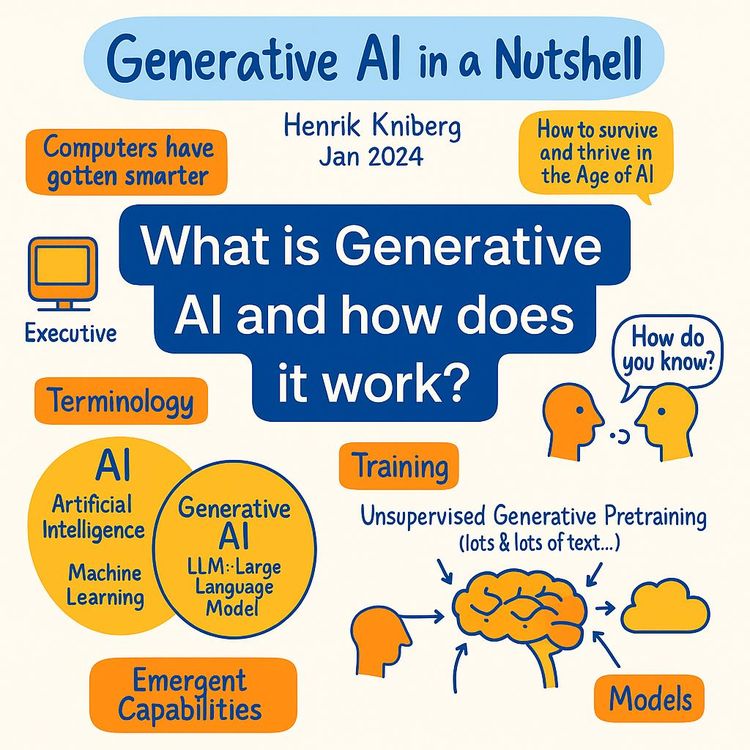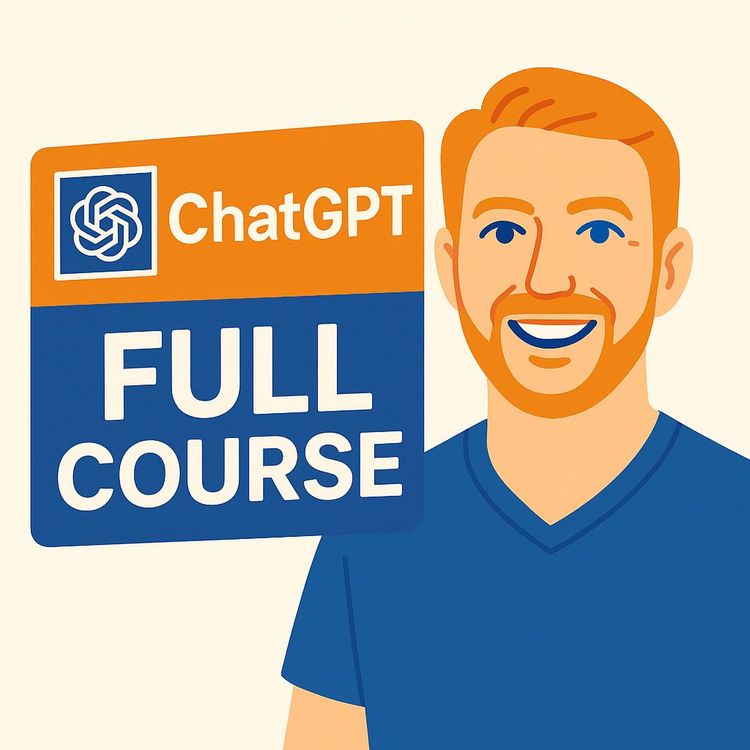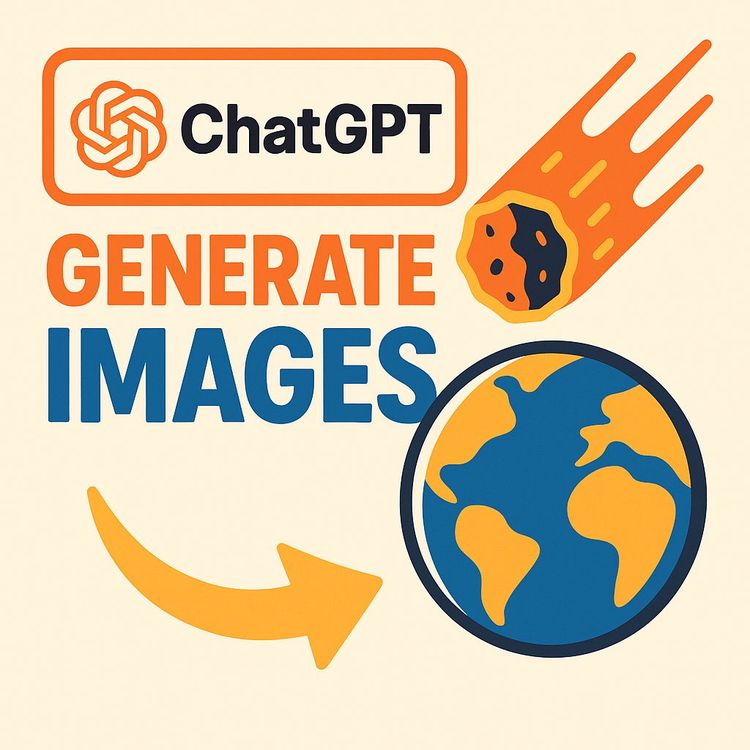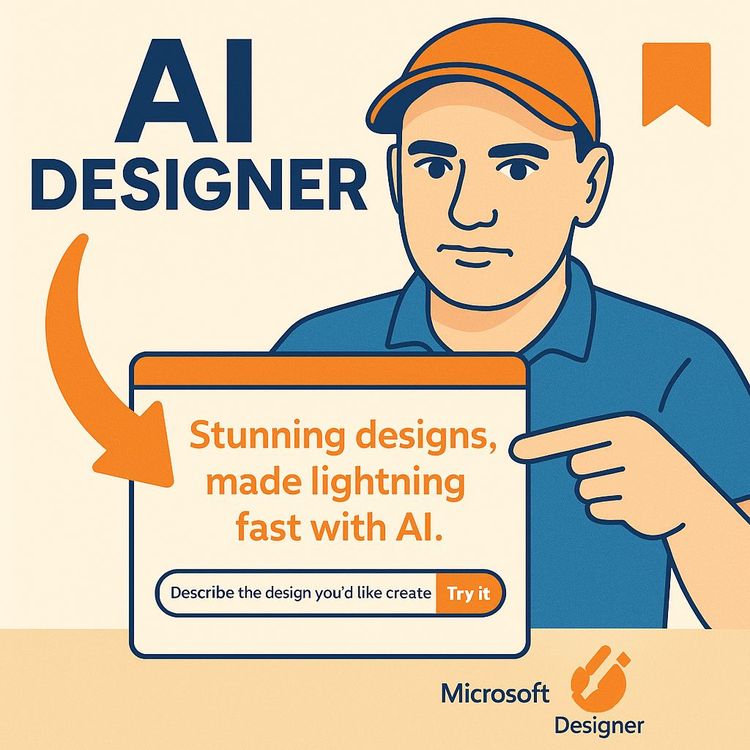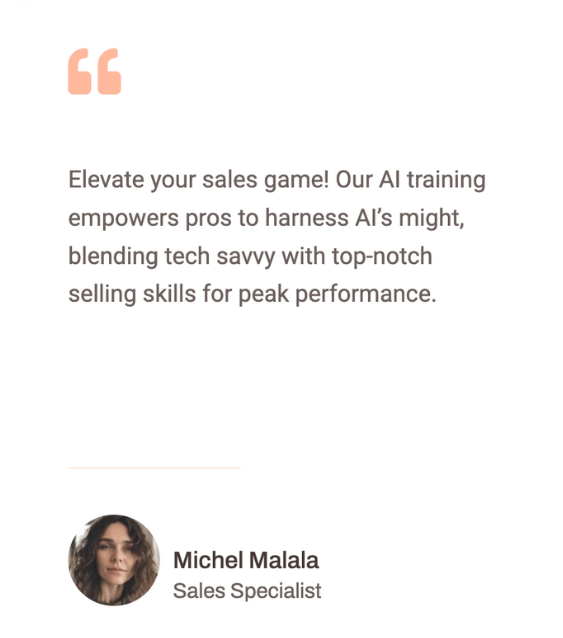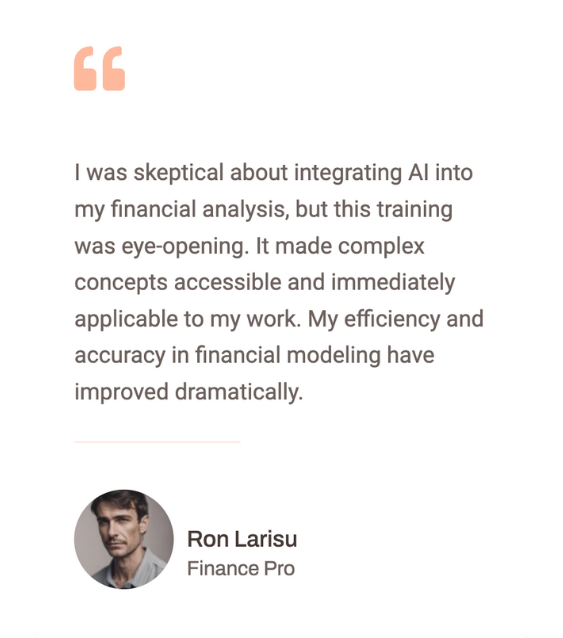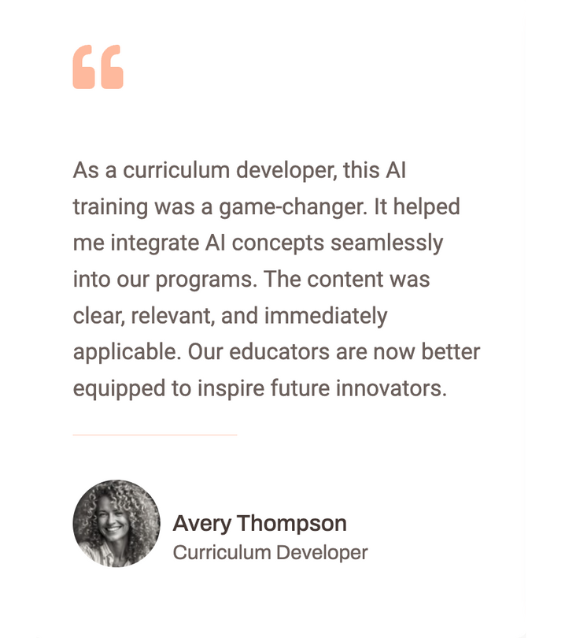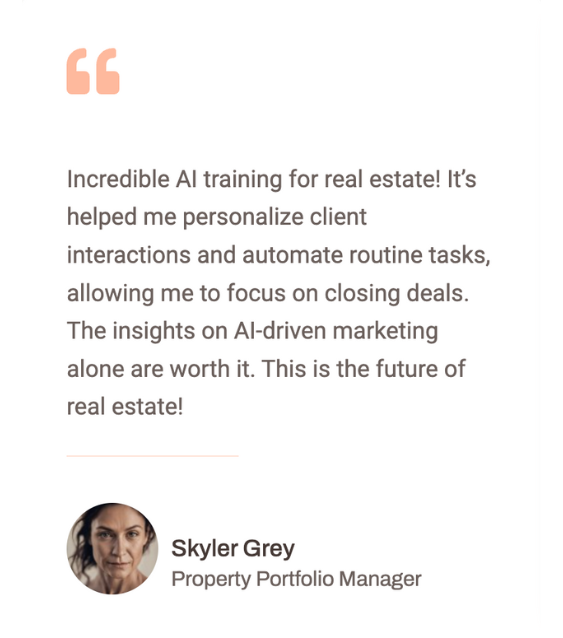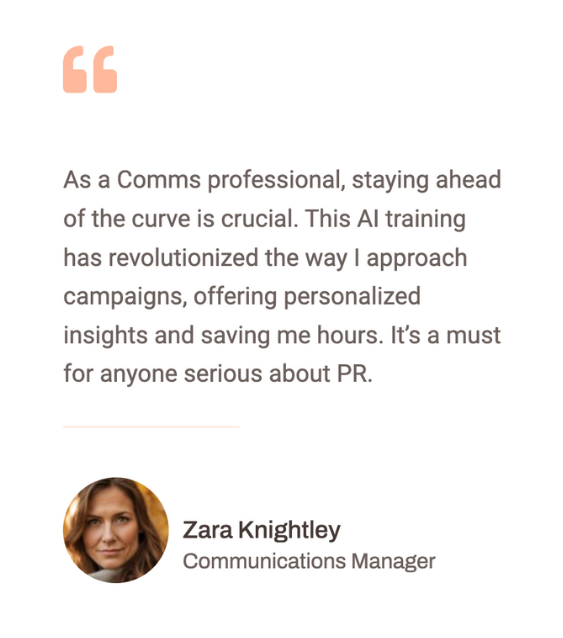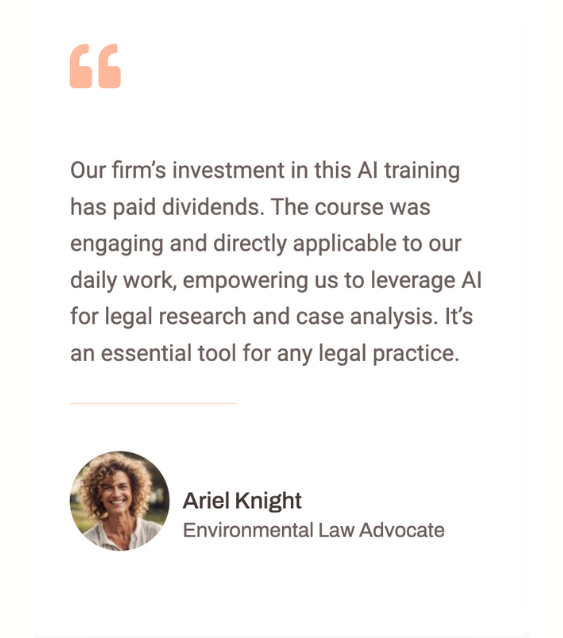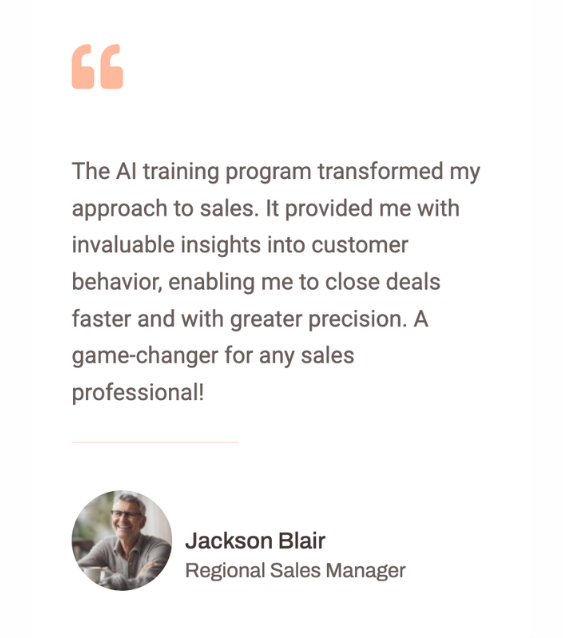AI Product Management Course: LLMs, RAG, AI Agents, Evaluations (Video Course)
Learn to ship AI features with confidence in just 3.5 hours. You'll pick the right trade-offs, apply prompts, RAG, fine-tuning, and agents, and build evals that keep you honest. Your product moves from demo to dependable, fast.
Related Certification: Certification in Designing, Managing & Evaluating LLM Products with RAG & Agents

Also includes Access to All:
What You Will Learn
- Explain LLM fundamentals: tokens, context windows, and attention
- Choose the right approach: prompting vs RAG vs fine-tuning
- Design practical RAG pipelines: chunking, embeddings, and retrieval
- Build evaluation systems: LLM-as-judge, rubrics, and release gates
- Architect AI agents with tools, memory, human approvals, and safety rails
Study Guide
AI Product Management , Complete Course , Masterclass | LLMs, RAG, Fine-Tuning, Evals, and AI Agents
Welcome. This course will teach you how to think, build, and ship products powered by Large Language Models (LLMs). We won't get lost in math proofs or buzzword soup. We'll go straight to what matters: understanding what LLMs are, how to use them to create value, and how to confidently move from idea to production with techniques like prompt engineering, Retrieval-Augmented Generation (RAG), fine-tuning, evaluations, and AI agents.
Your unfair advantage as a product manager is not knowing the most algorithms , it's making the right trade-offs. That's what this course delivers: a mental model for choosing the simplest solution that works, backed by practical architecture patterns you can actually implement.
What This Course Covers And Why It's Valuable
We'll start from zero and get you fluent in the concepts behind modern AI systems. You'll learn how LLMs work, what a context window is, why tokens matter for cost and accuracy, and how transformers unlocked the current wave of innovation. Then, we'll move layer by layer through the GenAI value stack, clarify product management roles, and build your toolbox: prompt engineering, RAG, and fine-tuning. We'll take it further with AI agents , systems that don't just answer questions, but take actions. Finally, we'll implement rigorous evaluations so your product is not a demo that breaks on contact with reality.
By the end, you'll be able to:
- Explain LLMs clearly to stakeholders , without jargon.
- Select the right architecture (prompting, RAG, fine-tuning) for your use case.
- Design reliable AI features with guardrails, memory, and tool use.
- Build an evaluation pipeline that measures quality, safety, and bias.
- Ship practical AI capabilities into products and workflows with confidence.
Section 1 , Foundations: What An LLM Actually Does
At the core, an LLM is a next-token predictor. It looks at the text you give it, calculates the probability of the next token, picks one, appends it, and repeats. That's it. From that simple loop emerges language understanding, translation, structured outputs, code generation, and sophisticated reasoning , because the model has learned patterns across large text corpora.
Key ideas to internalize:
- Probabilistic, not factual: LLMs do not "know" facts; they recognize patterns. They can be confidently wrong if your prompt invites it.
- Tokenization: Text is split into tokens (subwords). Pricing and context limits are measured in tokens. Plan for roughly 2-4 tokens per 3 words depending on the tokenizer; a practical rule: 2 words ≈ 3 tokens.
- Context window: There's a hard limit to how much text the model can consider at once. Overstuff the prompt and you'll see "lost in the middle" , details in the middle get ignored.
Examples:
1) Sales email assistant: You feed a few customer notes and the model predicts an email body token by token, guided by your instructions and examples.
2) SQL generator: Provide a schema and a request ("top 10 customers by LTV") and the model predicts the SQL query token by token, often accurate when the schema and constraints are explicit.
Section 2 , The Three-Stage LLM Training Process
To build intuition, break the lifecycle into three stages: pre-training, supervised training, and post-training/alignment. Understanding these helps you decide when to rely on prompting, when to add RAG, and when to consider fine-tuning.
1) Pre-training , The raw brain
- Objective: Learn language patterns by predicting missing or next tokens across huge, diverse text corpora.
- Outcome: A "base" model with broad knowledge but no strong instruction-following behavior.
Examples:
1) The base model knows what a "balance sheet" is and can continue a paragraph about it.
2) It can write plausible prose in multiple styles without specific instructions, because it has learned styles statistically.
2) Supervised training (instruction tuning) , The helpful assistant
- Objective: Teach the model to follow instructions with high-quality input-output pairs created by humans.
- Outcome: The model becomes far better at "Do X with Y constraints, in Z format."
Examples:
1) A prompt: "Summarize this meeting into decisions, risks, and owners" yields clean, structured output because the model learned that pattern from curated training pairs.
2) A prompt: "Extract all dates and products from this email and return JSON" returns a reliable schema because the model saw many similar tasks during instruction tuning.
3) Post-training and alignment , Consistency and safety
- Objective: Refine behavior using feedback signals such as preference rankings (e.g., RLHF) to prefer helpful, harmless, and honest responses.
- Outcome: The model resists harmful requests, admits uncertainty more often, and follows conversational norms.
Examples:
1) The model declines to provide unsafe content even if the prompt tries to bait it.
2) The model asks clarifying questions when the instruction is underspecified, because that pattern is rewarded during alignment.
Section 3 , The Technological Catalyst: Transformers and GPUs
Transformers introduced "attention," which lets the model weigh the relevance of all tokens to each other simultaneously. That parallelism unlocked scale , and scale unlocked capability. GPUs enable this parallel computation efficiently, both in training and inference.
What to remember as a PM:
- Attention = context sensitivity. If outputs ignore context, your issue might be with how you structure or retrieve information, not the model itself.
- GPUs = cost/time constraints. Latency and cost per call matter to UX and margins. Batch where you can. Cache when you can.
Examples:
1) A contract analysis feature that highlights clauses benefits from attention , the model can relate a clause to the rest of the document in one pass.
2) A code refactor tool runs faster and cheaper when you minimize token counts and reuse cached embeddings for unchanged files.
Section 4 , The GenAI Value Stack And PM Roles
Value is created across four layers. Your PM decisions change depending on where you operate.
The four layers:
1) Infrastructure: Compute and accelerators (e.g., GPUs, cloud services).
2) Model: Foundation and frontier models (LLMs, embedding models).
3) Application: User-facing products built on existing models , where most PMs operate.
4) Services: Agencies and consultancies delivering outcomes using AI tools.
PM role types:
- AI-Enabled PM: Uses AI tools to speed up discovery, ideation, and delivery (e.g., draft PRDs, produce UX copy, comb through research).
- AI Product PM: Builds AI-native features. Two subtypes:
, Core AI PM: Works on models or infra. Deep ML background. Focus on model optimization and platform capabilities.
, Applied AI PM: Works at the application layer. Selects models, designs retrieval, crafts prompts, defines evaluations, ships user value.
Examples:
1) Applied AI PM at a CRM vendor: Build an opportunity-insights feature with RAG over sales notes and emails.
2) Applied AI PM at a knowledge platform: Create a study assistant that cites sources from user-uploaded PDFs and web pages.
Section 5 , Context Engineering: The Real Game
The model can only see what you put in its context window. If you give it the right 1-3 pages of information, it's brilliant. If you pack it with 80 pages of noise, it fumbles. Context engineering is deciding what goes into that window , and what stays out.
Core challenges to solve:
- Limited window: You can't send everything. Prioritize ruthlessly.
- Lost in the middle: Middle content can be ignored; put critical facts at the top or bottom.
- Cost vs. quality: More tokens can help , until they don't. Optimize for signal.
Examples:
1) Policy assistant: Retrieve only the relevant policy sections for the user's question, then summarize and cite.
2) Meeting insight generator: Cut transcripts into topic segments, then pick the most relevant segments per query rather than pushing the entire transcript.
Section 6 , Technique #1: Prompt Engineering
Prompt engineering is your first lever. It's cheap, fast, and shockingly effective when done well. Think of it as UX for the model: you're defining its role, the task, the constraints, and the output format.
Core principles:
1) Assign a role: "You are a senior solutions architect."
2) Specify the format: "Return JSON with keys: summary, risks, open_questions."
3) Provide examples (few-shot): Show 1-3 ideal inputs and outputs.
4) Set constraints: "Do not invent facts. If missing information, say 'insufficient context.'"
Examples:
1) Customer success recap: Feed support ticket excerpts and request a structured weekly summary with churn risks, root causes, and recommended playbooks.
2) Developer assistant: Provide a function signature, coding style guide, and examples of correct error handling; ask for only the function body in a fenced code block.
Tips & best practices:
- Keep instructions at the top. The model pays early attention more reliably.
- Be explicit about what not to do (no assumptions, no external facts).
- Use delimiters and schema: "Between
- Iterate quickly: small prompt edits can create step-function improvements.
Section 7 , Technique #2: Retrieval-Augmented Generation (RAG)
When your model needs private, fresh, or proprietary knowledge, you don't retrain the whole model. You connect it to a knowledge base and fetch the right slices at the right time , that's RAG. You store numerical representations (embeddings) of your documents, then search by meaning, not just keywords.
The RAG pipeline:
1) Indexing (offline):
- Load data: PDFs, docs, webpages, transcripts, tickets.
- Chunk: Split into meaningful pieces (e.g., paragraphs, sections).
- Embed: Convert each chunk into a vector embedding.
- Store: Save embeddings in a vector database for fast similarity search.
2) Retrieval and generation (real-time):
- User query: Convert the query to an embedding.
- Search: Retrieve top-k similar chunks.
- Augment: Insert those chunks into a prompt with the original query.
- Generate: Ask the LLM to answer using only the provided context.
Examples:
1) Customer support copilot: Pull exact policy and troubleshooting steps from internal docs; generate a suggested reply that cites sources.
2) Research companion: Upload whitepapers and notes; ask questions like "Summarize the top 3 findings with citations," grounded in those documents.
Use cases called out in practice:
- Document Q&A (e.g., personal knowledge tools).
- Finance chatbots that reference market or product data.
- Internal knowledge assistants for onboarding, sales engineering, or compliance.
Tips & best practices:
- Chunking: Keep chunks cohesive (e.g., 200-500 tokens). Include titles and headings. Use overlap to avoid cutting key context.
- Query rewriting: Expand or reformulate user queries to improve recall ("retrieval query" separate from "generation prompt").
- Re-ranking: Pull top 20, then re-rank with a stronger model to select the best 5 for generation.
- Groundedness guardrails: Preface generation with instructions like "Answer only from context. If missing, say 'insufficient context' and list what's needed."
Section 8 , Technique #3: Fine-Tuning
Fine-tuning is retraining a pre-trained model on a specialized dataset to alter behavior or improve performance on niche tasks. Use it when the issue isn't missing facts, but desired style, tone, or domain behavior. It's expensive and complex , so it's the last resort after prompting and RAG.
When to use fine-tuning:
- Behavior/style: Match a brand voice or a legal tone precisely and consistently.
- Domain-specific tasks: Complex classification, long-form generation with strict structure, or reasoning patterns that the base model struggles with even when given context.
Examples:
1) Brand content generator: Train on high-quality brand-approved posts and press releases so the model nails tone and phrasing every time.
2) Medical note normalizer: Train on labeled clinical notes to standardize to a specific coding scheme with high accuracy.
Trade-offs and risks:
- Cost: Data prep, training runs, and inference can be more expensive than RAG.
- Data sensitivity: You must own and permission your training data.
- Overfitting: The model can memorize narrow patterns and worsen on general tasks.
- Maintenance: You'll need versioning, monitoring, and periodic refreshes.
Decision rule of thumb:
1) Start with prompt engineering.
2) Add RAG if you need proprietary or fresh knowledge.
3) Fine-tune only when behavior itself must change and the first two weren't enough.
Section 9 , Architectures & Case Studies You Can Steal
Let's deconstruct common patterns and their building blocks so you can apply them immediately.
Case Study A: AI Meeting Assistant
Architecture steps:
1) Audio capture: Join meetings via APIs or a bot to record audio.
2) Speech-to-text: Transcribe with an ASR model to get raw text.
3) System prompt + LLM: "You are a chief of staff. Summarize decisions, owners, and deadlines."
4) Output structuring: Return JSON; summarize by topics; extract action items.
5) Optional agentic actions: Create Jira tickets, send Slack follow-ups, schedule calendar invites.
Examples of outputs:
1) Executive summary + decisions + risks; links back to transcript segments.
2) Automatic task creation with assignees, deadlines, and dependencies.
Case Study B: Document Insights Assistant
Architecture steps:
1) Ingest PDFs and docs, chunk with headings, embed, and store in a vector DB.
2) Query rewriting to improve retrieval (e.g., add synonyms, entities).
3) Retrieve top-k chunks and re-rank with a cross-encoder for precision.
4) Generate grounded answers with citations and quotes from the source.
Examples of outputs:
1) "What are the top 5 regulatory risks?" with citations and page numbers.
2) "Compare product A vs B across security, pricing, and integrations," using only the uploaded docs.
Section 10 , AI Agents: From Answers To Actions
Agents are autonomous systems that can plan, use tools, and act. The LLM is the brain for reasoning; tools are how it touches the world; memory retains context across steps. Instead of just "tell me," agents can "do it for me."
Core components:
- Reasoning: The LLM turns goals into plans and next steps.
- Memory: Vector stores or databases to remember prior interactions, decisions, and facts.
- Tools: APIs, web browsers, databases, file systems, email, calendars, code execution sandboxes.
- Loop: Observe → Plan → Act → Observe, until the goal is achieved.
Case Study: Automated App Development (e.g., "build an Airbnb-style app")
1) Planning: The LLM drafts architecture, stack, and milestones.
2) Code writing: The agent writes files to a virtual file system tool.
3) Execution: It runs the app, collects errors, and debugs in a loop.
4) Deployment: Ships a working version and verifies key flows.
Another agent example:
1) Travel planner: It searches flights, checks hotels, proposes an itinerary, and books after approval.
2) Sales ops agent: It reviews new leads, enriches with external data, drafts personalized outreach, and schedules emails subject to approval limits.
Best practices for agents:
- Human-in-the-loop: Require approvals for sensitive actions (spend, send, delete).
- Tool contracts: Enforce strict input/output schemas for tools to reduce errors.
- Safety rails: Spending caps, allowlists, and clear fallbacks on failure.
- Observability: Log every plan, tool call, and observation for debugging.
Section 11 , Ensuring Quality: AI Evaluations (Evals)
LLMs are non-deterministic. The same prompt can produce different outputs. Evals keep you honest. They let you measure quality, bias, safety, groundedness, and reliability with a repeatable rubric , before you ship and while you operate.
LLM-as-a-Judge (core pattern):
- You use a strong model as an evaluator of your system's outputs.
- Provide the judge with: the original input, the system's output, the ground truth (if available) or source docs, and a scoring rubric.
- The judge returns scores and explanations you can use to flag, fail, or iterate.
Examples:
1) Job description → interview kit: The judge checks that questions map to listed skills, no hallucinations, and diversity-friendly phrasing, then assigns a score and improvement notes.
2) Support answer quality: Judge scores "accuracy," "helpfulness," and "groundedness" against retrieved policy pages; reject or revise if any score falls below threshold.
Metrics to track:
- Groundedness: Does the answer cite retrieved sources? Are quotes accurate?
- Relevance: Is the content on-topic and useful?
- Factuality: Cross-check against provided sources or ground-truth labels.
- Safety: Filter toxicity, PII leak, and policy violations.
- Retrieval performance: Precision@k, Recall@k, and MRR for your retriever.
Best practices:
- Build golden datasets: Curate inputs and ideal outputs for repeatable testing.
- Test both offline and online: Pre-release and post-release monitoring matter.
- Gate releases: Require eval thresholds before promoting a model or prompt.
- Regression checks: When you tweak prompts or chunking, re-run the full suite.
Section 12 , Key Concepts & Terminology (Fast Reference)
Large Language Model (LLM): A neural network trained to predict tokens. Emergent behavior comes from scale and training quality.
Token & Tokenization: Text split into subword units. Costs and limits are measured in tokens. Estimating 2 words ≈ 3 tokens keeps budgets sane.
Parameters: Internal weights learned during training. They encode patterns from data.
Transformer & Attention: Architecture enabling parallel processing of sequences. Attention decides which tokens matter most to each other.
Vector Embedding: Dense numeric representation of text. Similar meanings land near each other in vector space.
Vector Database: Stores embeddings for fast similarity search; the backbone of RAG.
RAG (Retrieval-Augmented Generation): Retrieve relevant context, then generate answers grounded in it.
Fine-tuning: Adapt a pre-trained model to a domain or behavior with curated data.
AI Agent: An LLM-powered system that plans, uses tools, and takes actions to achieve goals.
AI Evaluations: Systematic measurement of model quality, safety, and reliability; often with LLM-as-a-judge.
Section 13 , The PM Decision Framework: Prompting vs. RAG vs. Fine-Tuning
Here's the practical playbook most successful AI PMs use:
1) Start simple with prompts:
- If the model can do it with clear instructions and a few examples, ship it. It's cheapest and fastest.
- Add structured outputs (JSON) and delineated context blocks for reliability.
2) Add RAG when knowledge is missing:
- If you need private, fresh, or proprietary info, bolt on RAG.
- Focus on chunking and retrieval quality; they determine accuracy more than the model.
3) Use fine-tuning for behavior or style changes:
- If you need consistent tone, domain-specific reasoning, or strict structure at scale, fine-tune.
- Justify the cost with a clear business case and stable requirements.
Examples:
1) Marketing copy tool: Start with prompt templates and examples; add RAG for brand guidelines; fine-tune only if tone must be perfectly consistent across languages and channels.
2) Compliance Q&A: Start with RAG over policy docs; add a re-ranker; consider fine-tuning a classifier for policy categories to improve accuracy of retrieval targets.
Section 14 , Product Strategy In The Application Layer
Most opportunity lies where products meet users. Your mandate is to turn LLM capabilities into outcomes. That takes ruthless prioritization, data plumbing, UX clarity, and tight feedback loops.
Discovery questions to ask:
- What painful task can be reduced to a single prompt or click?
- What source of truth must we ground on to avoid hallucinations?
- What is "good" output? Can we score it automatically?
- What failure modes scare legal, security, or customers? Add guardrails early.
Examples:
1) Sales coaching assistant: Score call snippets on talk ratio, objection handling, and next-step clarity, then coach with examples from top reps.
2) Analyst copilot: Take messy spreadsheets and ask questions like "Find outliers and explain them," with contextual plots and commentary.
Section 15 , Implementation Deep Dive: Building RAG That Actually Works
Indexing tips:
- Normalize documents: remove boilerplate, extract headings; keep metadata (author, date, tags).
- Chunk heuristics: 200-500 tokens per chunk, overlap 10-15%. Convert tables into text with headers preserved.
- Embedding model choice: Prioritize multilingual support if needed; test domain performance; cache embeddings aggressively.
Retrieval tips:
- Hybrid search: Combine keyword and vector search for precision on names, IDs, and acronyms.
- Re-ranking: Use a cross-encoder to reorder top results for better quality.
- Query expansion: Generate synonyms and related terms; useful for domain-specific jargon.
Generation tips:
- Instruction scaffolding: "Answer strictly from the sources. Cite with [doc:title#section]. If you lack info, say so."
- Source quoting: Include verbatim quotes for critical facts to prevent drift.
- Output schema: Return JSON with fields for "answer," "citations," "confidence," and "missing_info."
Examples:
1) Internal policy Q&A: Achieves high groundedness and trust when answers always include citations and links to policy pages.
2) Financial research bot: Answers "What changed quarter-over-quarter?" by retrieving relevant sections and quoting the exact lines from filings.
Section 16 , Implementation Deep Dive: Fine-Tuning Without Regret
Data preparation:
- Curate high-quality, representative examples. Remove contradictory or low-quality outputs.
- Balance classes/styles if you're training classifiers or structured formats.
- Annotate edge cases and failure modes explicitly.
Experiment design:
- Start small: try a small model or limited steps to validate lift.
- Compare against strong prompting + RAG baselines.
- Keep golden evals constant so you can measure true gains.
Operational concerns:
- Versioning: Track data, hyperparameters, and checkpoints.
- Monitoring: Watch drift in style or accuracy; schedule periodic re-tunes.
- Cost control: Use adapters/LoRA where possible; quantize for inference savings.
Examples:
1) Brand style fine-tune: Achieves consistent tone across channels, cutting manual editing time by half.
2) Medical classification fine-tune: Boosts F1 score on rare categories that prompt + RAG struggled to capture.
Section 17 , AI Agents: Design Patterns And Guardrails
Common patterns:
- Single-agent with tools: One brain, many tools (email, calendar, CRM).
- Multi-agent collaboration: Planner, researcher, builder, reviewer; each with specialized prompts and tools.
- Graph-based workflows: State machines where nodes are tasks and edges are conditions to transition.
Guardrails and governance:
- Approval gates: Require human approval for actions like spend, send, and delete.
- Rate limits and budgets: Token limits per task; spending caps; tool call cooldowns.
- Allow/deny lists: Restrict domains, endpoints, and file systems.
- Auditing: Immutable logs of prompts, tool calls, outputs, and decisions for post-mortems.
Examples:
1) Recruiting agent: Reviews resumes, drafts outreach, schedules interviews; requires recruiter approval to send messages and to book slots.
2) Data hygiene agent: Reads CRM duplicates, proposes merges with evidence; human approves before changes hit production.
Section 18 , Evaluation Systems: Rubrics, Metrics, And Tooling
Rubric design:
- Criteria: Accuracy, groundedness, completeness, relevance, safety, style adherence.
- Scales: Use 1-5 with descriptors for each level; avoid ambiguous labels.
- Evidence: Require the judge to cite the exact lines or fields supporting a score.
Offline vs. online evals:
- Offline: Fast iteration during development; use golden datasets and LLM-as-judge.
- Online: Monitor in production with sampling, user feedback, and automated checks.
Retriever evals:
- Precision@k: Of the retrieved chunks, how many were relevant?
- Recall@k: Did we retrieve the relevant chunks at all?
- Diagnostic queries: Known hard cases (acronyms, synonyms, negations) to stress-test the retriever.
Examples:
1) Content moderation: Judge checks for policy violations before any user sees the output; flagged items are queued for review.
2) Legal doc assistant: Judge ensures every claim is grounded with a citation and that summaries include mandatory sections (parties, obligations, term, termination).
Section 19 , Practical PM Playbook: Discovery, Delivery, And Risk
Discovery checklist:
- Define the user journey and where AI reduces friction the most.
- Identify source-of-truth data and permission boundaries.
- Decide "what good looks like" , write the eval rubric before building.
- Prototype with prompts first; add RAG; consider fine-tune last.
Delivery checklist:
- Instrument everything: token counts, latency, errors, retrieval hits, judge scores.
- Build kill switches and rollbacks for prompts, retrievers, and models.
- Implement observability logs for debugging and audits.
- Plan for cost control: caching, batching, and rate limiting.
Risk checklist:
- Privacy: Don't send secrets to third-party models without contracts and encryption.
- Safety: Apply content filters and approval gates for sensitive actions.
- Compliance: Keep an audit trail; tag data lineage; respect retention policies.
- Bias: Include fairness checks in evals with diverse test cases.
Examples:
1) Launching a support assistant: Run shadow mode for a week, compare to human answers, monitor judge scores, then gradually enable suggestions to agents with a feedback button.
2) Launching a coding agent: Limit to non-production repos, require code review from a senior dev, and log all diffs with rationale from the agent.
Section 20 , Implications And Applications For Different Audiences
For Product Managers: Use the prompting → RAG → fine-tuning framework. Start with quick wins. Pick a single, painful workflow and compress it into minutes.
For Educational Programs: Teach RAG, prompt engineering, ethics, and evals. Students need hands-on projects like building a RAG chatbot and an agent with approvals.
For Business Leaders: Decide where to invest: model research, platform capabilities, or the application layer. Most will win by building at the application layer with strong retrieval and evals.
For Students & Career Changers: Build a portfolio: a RAG app with citations, a prompt library, and a simple agent that automates a real workflow. Show your evals and logs , it signals maturity.
Section 21 , Action Items & Recommendations
1) Reverse-engineer successful AI products:
- Pick tools like personal research companions or writing assistants. Ask: Are they using RAG? What's their chunking strategy? Is tone consistent (fine-tuning)? How might they evaluate quality?
2) Build a simple agent:
- Use low/no-code to chain "summarize article → draft email digest → send to self." Add an approval step before sending. Congrats: you've implemented a safe agent loop.
3) Create a prompt directory:
- Maintain tested prompts with roles, constraints, and examples. Track performance notes and edge cases. Treat this as reusable product knowledge.
4) Prototype a RAG Q&A:
- Ingest personal notes or team docs. Build chunking, embedding, and retrieval. Return answers with citations and a confidence score. Add a "view sources" UX.
Section 22 , Authoritative Statements To Anchor Your Thinking
"A Large Language Model is a neural network trained on massive amounts of text to learn patterns in language, enabling it to understand, generate, and reason with natural language by predicting the next most likely word or token in the context."
"Context Engineering is the delicate art and science of filling the context window with just the right information for the next step."
"Retrieval-Augmented Generation (RAG) combines external knowledge retrieval with LLM text generation to produce more accurate, up-to-date, and verifiable responses."
"Fine-tuning is the process of adapting a pre-trained large language model with domain-specific data to make it more useful for a particular task or to alter its inherent behavior."
"An AI Agent is an autonomous system that uses an LLM for reasoning, can access memory, and uses tools to execute actions and achieve goals."
Section 23 , Extra Depth: Advanced RAG Techniques You'll Actually Use
Hierarchical retrieval: Retrieve top documents, then retrieve top sections within those, then chunks. This reduces noise and forces topical relevance.
Structured retrieval: Store metadata like product, region, and version. Filter by metadata before vector search to avoid cross-wire answers.
Answer re-check: After generating, ask the model to verify each claim against sources. If unsupported, downgrade confidence or request more info.
Examples:
1) Multi-source wiki bot: Filter by team and version first, then vector search; massively reduces misinformation across teams.
2) Product docs assistant: Retrieves a "What's new" document first, then dives into sections; final answer shows excerpts from the exact subsections.
Section 24 , Extra Depth: Agentic Design Patterns
Planner-executor: One agent creates a plan, another executes steps with tool calls, and a reviewer checks quality before finalization.
Role-specialized prompts: Give each agent a job description and metrics for success. The planner cares about coverage; the reviewer cares about correctness.
Fallbacks: If a tool fails, switch to a backup tool or reduce scope and ask the user to decide next steps.
Examples:
1) Content pipeline: Planner generates an outline, writer drafts, SEO reviewer checks keywords and structure, editor polishes tone.
2) Data migration: Extractor pulls data, transformer maps fields, validator checks row counts and sample records, approver signs off before import.
Section 25 , Extra Depth: Evals In The Real World
LLM-as-judge prompt sketch:
- System: "You are a strict evaluator. Score each criterion from 1-5 with evidence."
- Input: Original request and any ground-truth or source docs.
- Output: JSON with fields: scores, rationale_per_criterion, pass_fail, improvement_suggestions.
Continuous evaluation pipeline:
- Nightly batch: Run golden set through the latest prompts/retrievers.
- Release gates: Block deploy if scores drop beyond threshold.
- Drift alerts: If live user feedback worsens, rollback to the last stable config.
Examples:
1) Weekly model refresh: Compare current vs. last week's prompts and retriever; promote the configuration only if average score improves and variance doesn't spike.
2) Safety watchdog: Judge inspects outputs for policy violations; flags trigger immediate investigation and retraining of prompts or filters.
Section 26 , Cost, Latency, And Reliability: The Quiet Killers
Cost control:
- Token discipline: Trim inputs, avoid repeating the same context, and summarize history into compact memory notes.
- Caching: Don't re-embed unchanged documents; cache frequent RAG queries.
- Batching: Group similar tasks to reduce overhead.
Latency control:
- Parallelize independent tool calls.
- Retrieve narrowly to limit long contexts.
- Precompute popular answers and store them with freshness windows.
Reliability control:
- Timeouts and retries with exponential backoff.
- Strict schemas with JSON schema validation.
- Circuit breakers when external tools fail.
Examples:
1) FAQ assistant: Cache common questions and responses; only regenerate when underlying documents change.
2) Code explainer: Summarize file context once, reuse for multiple line-by-line questions to cut costs dramatically.
Section 27 , Ethics, Safety, And Trust
Priorities:
- Privacy: Respect data boundaries; encrypt at rest and in transit; minimize data sent to third parties.
- Bias checks: Include demographic variations in eval sets; analyze outputs for skewed recommendations.
- Transparency: Cite sources and confidence; let users correct outputs and provide feedback.
Examples:
1) HR screening assistant: Only highlight skills; never infer sensitive attributes; explain criteria clearly.
2) Healthcare assistant: Provide educational content, not diagnosis; include disclaimers and encourage professional consultation.
Section 28 , Practice Questions: Check Your Understanding
Multiple Choice:
1) What is the primary function of a vector database in a RAG system?
a) Store original text documents
b) Run the LLM
c) Store embeddings for fast similarity search
d) Fine-tune the model
Answer: c
2) Which scenario is best for fine-tuning?
a) Answering questions about live news
b) A chatbot using specialized legal terminology accurately and consistently
c) Summarizing a user-provided article
d) Meeting transcription
Answer: b
Short Answer:
1) Difference between parameters and context window?
- Parameters are the learned weights of the model; they encode patterns. The context window is the amount of text the model can consider in one go.
2) Describe pre-training, supervised fine-tuning, and post-training.
- Pre-training learns general language patterns; supervised fine-tuning teaches instruction-following on curated pairs; post-training aligns behavior with human preferences and safety norms.
3) Why choose RAG over stuffing documents into the prompt?
- The context window is limited; performance degrades with noise; RAG retrieves only relevant chunks and grounds answers in sources, improving accuracy and cost.
Discussion:
1) E-commerce recommendations plan:
- Data: user behavior, product metadata, reviews. Start with prompt engineering for explanations, consider embeddings to match user interests with product vectors, and add RAG for up-to-date catalog info. Evaluate with CTR, conversion, and an LLM-as-judge rubric for relevance and diversity.
2) Agent guardrails for actions:
- Human approvals for spending and communications, caps and allowlists, detailed logs, and a simulation mode before production. Add safety filters and escalation flows.
Section 29 , Recapping The Key Insights
LLMs are probabilistic: They predict tokens, not truth. Treat them like powerful pattern engines; ground them with your data.
Start simple, escalate only as needed: Prompt first. Add RAG for knowledge. Fine-tune for behavior. Keep it lean and practical.
RAG is the workhorse of enterprise AI: Most valuable features depend on private or fresh data. Master chunking, retrieval, and re-ranking.
Product sense drives success: Focus on a clear user problem, define "good," and build evals around it. Technology is a means to an outcome.
Evaluation is non-negotiable: Without a continuous evaluation pipeline, you're flying blind. Measure accuracy, groundedness, safety, and bias , then iterate.
Section 30 , Final Project Suggestions (Portfolio-Ready)
1) RAG Knowledge Assistant: Upload product docs; return answers with citations, quotes, and confidence. Include a judge that checks groundedness. Show retrieval metrics.
2) Workflow Agent With Approvals: Summarize articles daily, draft an email digest, and send after approval. Log plans, tool calls, and decisions. Include spending caps and failures.
3) Prompt Directory + Evals: A repo of prompts with roles, constraints, and examples; each with a tiny golden set and a judge rubric to score quality. Share before/after improvements.
Section 31 , Common Pitfalls And How To Avoid Them
Pitfall: Over-stuffing the prompt. Fix: Retrieve narrowly; summarize history; move constraints to the top.
Pitfall: Skipping evals. Fix: Build a minimal judge and golden set early; gate releases on scores.
Pitfall: Fine-tuning too early. Fix: Exhaust prompting and RAG first; quantify the lift required to justify training.
Pitfall: Trusting outputs without citations. Fix: Require citations and quotes; teach users to verify quickly.
Pitfall: Agents with no guardrails. Fix: Approvals, limits, and audits as default; protect user trust.
Section 32 , What Success Looks Like
For users: Less friction, fewer clicks, clearer answers, and trustworthy citations. Work feels lighter, faster, and more precise.
For teams: Shorter cycles from idea to impact. A shared prompt library. A reliable RAG pipeline. An eval dashboard that catches regressions before customers do.
For the business: Features that differentiate. Margins that hold because you managed tokens, latency, and caching. A reputation for accuracy and transparency.
Conclusion , Your Next Step
You now have the blueprint. LLMs generate tokens, not truth, so you feed them the right context. Start with prompts; move to RAG when knowledge is missing; fine-tune only when behavior must change. Agents unlock action , but only with memory, tools, and guardrails. Evals keep you honest, from prototype to production.
The opportunity isn't to glue a model onto an app and hope users care. The opportunity is to redesign workflows so the user asks, and the product delivers , fast, grounded, and reliable. Choose a narrow problem. Build the smallest system that reliably solves it. Measure quality. Iterate. Then expand. That's how you go from hype to habit , and build AI products people depend on.
Frequently Asked Questions
This FAQ is a practical companion for anyone building or managing AI products with LLMs, AI Agents, RAG, and Evaluations. It answers the most common questions,from first principles to deployment, measurement, and governance,so you can ship useful features, avoid costly mistakes, and communicate clearly with technical and non-technical stakeholders. Questions progress from fundamentals to advanced architectures and ops.
Fundamentals of Large Language Models (LLMs)
What is a Large Language Model (LLM)?
LLMs predict the next token to generate useful language outputs.
A Large Language Model is a neural network trained on massive text corpora to predict the next most likely token (a word or subword). With that simple objective repeated at scale, it can summarize documents, answer questions, write code, translate, and reason through instructions. Think of it as a probabilistic engine that converts context plus instructions into text, tables, or structured data. Examples include GPT, Claude, and Llama families. For product teams, the key is that an LLM can understand, transform, and generate content with minimal setup. You control its behavior through prompts, retrieval (RAG), and sometimes fine-tuning. Implication for PMs: you don't need to build a model from scratch to ship value; you orchestrate inputs, constraints, and data to consistently get the output you want.
How do LLMs understand text? What are "tokens"?
Text becomes numbers via tokenization; models operate on tokens, not words.
LLMs can't read raw characters; they process tokenized sequences. Tokenization splits text into units (words, subwords, punctuation) and maps them to integers. Two English words often map to about three tokens on average. The model's "vocabulary" is the set of tokens it knows. Pricing, latency, and context limits are all measured in tokens, so shorter, clearer prompts reduce cost and speed up inference. Example: "river bank" and "financial bank" share the token "bank," but the model uses surrounding tokens to infer meaning. Why this matters: token budgeting influences architecture decisions,how much context to send, when to chunk, which fields to include, and where to summarize. Smart token discipline = lower spend and higher accuracy.
How is an LLM trained?
Three stages: pre-training, instruction tuning, and post-training alignment.
1) Pre-training: the model learns general language patterns by predicting the next token on vast text datasets. 2) Supervised fine-tuning (instruction tuning): it's trained on curated input-output pairs (e.g., Q&A, summarization) to follow directions. 3) Post-training (often RLHF): human preference data shapes responses to be more helpful and safe.
Each step nudges the model from raw text prediction to practical assistant. GPUs accelerate the matrix math needed for attention-based architectures. Takeaway for PMs: you inherit powerful general skills "out of the box." Use prompts and RAG to inject context; only fine-tune when you need consistent behavior, style, or domain-specific expertise that prompting can't achieve reliably.
Why have LLMs and GenAI become so prominent recently?
Two forces: the Transformer architecture and accessible compute.
Transformers use attention to weigh relationships across an entire sequence, enabling stronger context handling than older sequential models. At the same time, modern GPUs and cloud AI services made large-scale training and inference feasible. The combo produced models that are broadly useful for real workflows,drafting, summarizing, coding, support, and analysis. For product teams: this utility shortens time-to-value. You can prototype quickly with hosted APIs, validate use cases, then iterate toward production with RAG, guardrails, and evaluations. Focus on measurable outcomes (time saved, error reduction, conversion lift) instead of novelty.
Are LLM outputs always the same for the same prompt?
No,LLMs are probabilistic; settings control variance.
LLMs sample the next token from a probability distribution. Temperature, top_p, and other decoding parameters affect creativity vs. stability. Lower temperature moves toward deterministic behavior; higher temperature increases variety. Even with the same prompt, small randomness can alter phrasing or reasoning paths. Production tip: lock down parameters for critical flows (invoices, compliance text), add automatic checks (evals, regex guards, JSON schema), and cache validated outputs. For brainstorming or ideation, allow more variance. Use "seed" or "logit bias" features where available for reproducibility and stylistic control.
The GenAI Ecosystem and Product Management Roles
Certification
About the Certification
Get certified in AI Product Management for LLMs, RAG, agents, and evaluations. Prove you can ship reliable AI features, pick smart trade-offs, design prompts, run fine-tunes, implement RAG, deploy agents, and build evals that keep products honest.
Official Certification
Upon successful completion of the "Certification in Designing, Managing & Evaluating LLM Products with RAG & Agents", you will receive a verifiable digital certificate. This certificate demonstrates your expertise in the subject matter covered in this course.
Benefits of Certification
- Enhance your professional credibility and stand out in the job market.
- Validate your skills and knowledge in cutting-edge AI technologies.
- Unlock new career opportunities in the rapidly growing AI field.
- Share your achievement on your resume, LinkedIn, and other professional platforms.
How to complete your certification successfully?
To earn your certification, you’ll need to complete all video lessons, study the guide carefully, and review the FAQ. After that, you’ll be prepared to pass the certification requirements.
Join 20,000+ Professionals, Using AI to transform their Careers
Join professionals who didn’t just adapt, they thrived. You can too, with AI training designed for your job.

